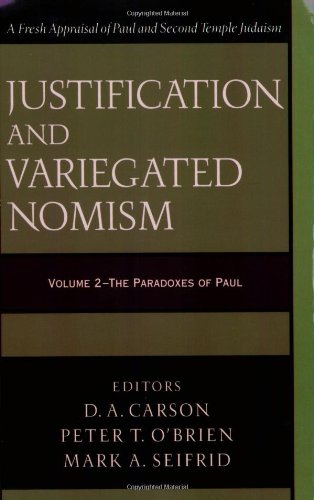A “Bonus” Chapter Summary from Books At a Glance
By Nathan Sundt
About the Author
Henri Blocher is the A. G. Guenther Knoedler Chair of Theology at Wheaton College Graduate School; Professor of Systematic Theology at the Faculté Libre de Théologie Evangélique in Vaux-sur-Seine, France
Overview
According to the publishing records and academic posts of those involved, the New Perspective debate can seem like a biblical studies intramural. Henri Blocher adds the voice of a systematician to the chorus, and he pines for former times when dogmaticians were required to teach exegetical seminary courses (on Romans, for example). He emphasizes how systematic theologians must be intimate with the original biblical material and in happy conversation with biblical studies; Blocher also emphasizes systemic theology’s more unique methodological features: a “more reflective mood,” interaction “with the history of Christian thought” and with “human thought, past and present.”
Blocher’s comments about what systematic theology adds to a debate such as the New Perspective are pure poetry: “[Systematic theologians] delineate and expound for the use of the church the credendum: the focus is no longer on what Paul thought and believed—but nostra res agitur” [the Latin phrase meaning, loosely, “the thing as it concerns us.”]. Blocher continues: “The systematic concern for appropriation makes one vulnerable, exposing the person in the weakness of his or her faith. It corresponds to the other construal of the hermeneutical circle, the involvement of subject with object.” Blocher appropriately highlights what only rarely has come to full flower in New Perspective debates, namely, the effect of the debate’s conclusions upon the church’s confession (both ancient and modern) and the conclusions’ involvement with and final outcome for the confessor’s personal commitment.
The chapter divides into five sections: (1) “On Presuppositions of Method,” (2) “On Sensing the Right,” (3) “On Lucid Despair,” (4) “On Forensic Meaning,” (5) “Opening Other Avenues to Conclude.” The first section begins with a brief treatment of hermeneutics, specifically concerning “the actual possibility of tending towards [Paul’s] meaning and reaching reasonable certainty with the help of objective arguments. Advocating a “perspective,” new or not so new, dissolves itself into nonsense if there is no definite object to target.” Blocher argues that this presupposition is a “responsible one to adopt” and is not much in dispute among various advocates. Not only do past generations occupy the same world as we do and tell us about it (paraphrasing Oliver O’Donovan), but also the Bible itself, in a place like Ecclesiastes, reveals the immediate relationship between every human life and God’s transcendent life. . . .
[To continue reading this summary, please see below....]The remainder of this article is premium content. Become a member to continue reading.
Already have an account? Sign In
Buy the books

JUSTIFICATION AND VARIEGATED NOMISM (VOLUME 2): PARADOXES OF PAUL, edited by D. A. Carson, Peter T. O'Brien, and Mark A. Seifrid